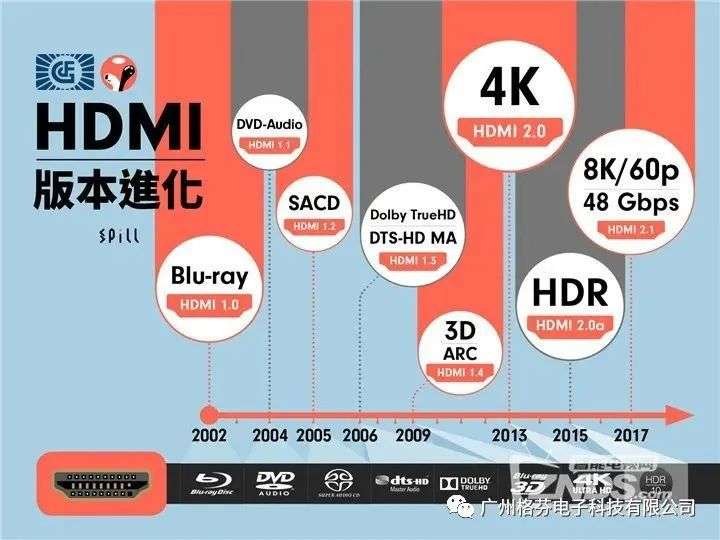
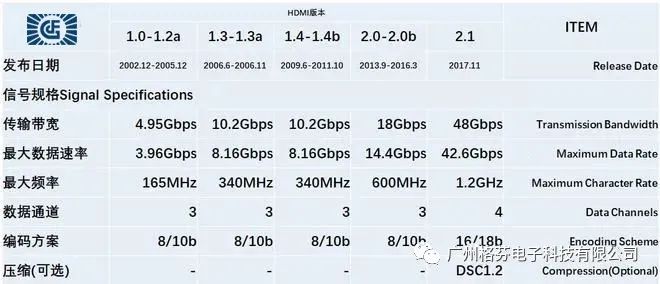
HDMI 1.0 was released on December 9, 2002 and is a single-wire digital audio/video connector interface. The link architecture is DVI-based and uses the exact same video transmission format, but sends audio and other ancillary data in the intervals between video streams. HDMI 1.0 allows a maximum TMDS clock of 165 MHZ (with a bandwidth of 4.95 Gbit/s per link), the same as DVI. It defines two connectors, called Type A and Type B, which use pinouts based on single-link DV-D and dual-link DVI-D connectors, respectively, although Type B connectors have never been used in any commercial product. HDMI 1.0 uses 8 b / 10 b encoded video transmission, giving it a video bandwidth of 3.96 Gbit / s (1920x1080 or 1920x1080 60 Hz) and 8 channels of LPCM / 192 kHz / 24-bit audio. HDMI 1.0 requires support for RGB video, optional support for YCBCR 4:4:4 and 4:2:2 (mandatory if the device supports YCBCR other interfaces). The color depth of 10 bpc (30 bits/pixel) or 12 bpc (36 bits/pixel) allows the use of 4:2:2 subsamling, but only 8 bpc (24-bit pixels) of color depth allows the use of RGB or YCBCR 4:4:4. Only Rec.601 and Rec.709 color spaces are supported. HDMI 1.0 only allows specific predefined video formats, including all formats defined in EIA/CEA-861-B, as well as some other formats listed in the HDMI specification itself. All HDMI sources/receivers must also be able to send and receive native single-link DVI video and be fully compliant with the DVI specification.
The earliest HDMI version, launched in December 2002, can be said to be designed for full HD software such as Blu-ray at that time, its biggest feature is that it integrates image and audio transmission at the same time, compared to DVI on the computer, DisplayPort pure image transmission interface, more suitable for the use of audio-visual equipment, HDMI 1.0 has supported DVD and Blu-ray video, the maximum bandwidth reaches 4.95 Gbps, of which 3.96 Gbps is used to transmit video streams, can be supported 1080/60p or UXGA resolution: In terms of audio, it supports 8-channel LPCM 24bit/192kHz, which means that it has been broadcast to multi-channel Hi-Res, which is quite strong in the comparison of cable specifications in the same period.
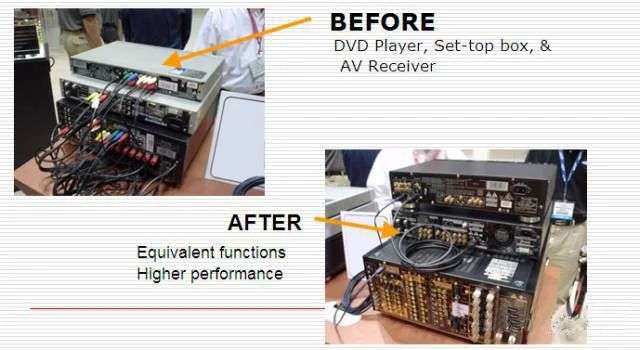
| HDMI 1.2
HDMI 1.2 version, SACD is supported. Launched in 2005, it added support for 1-bit audio, also known as SACD audio streaming, with support for up to 8 channels. DMI CEC allows you to control all compatible devices with a single remote control, which is quite convenient. HDMI 1.2 was released on August 8, 2005 and added a bit audio option for Super Audio CDs with up to 8 channels. To make HDMI more suitable for use on PC devices, version 1.2 also removes the requirement to use only explicitly supported formats. It adds the ability for manufacturers to create vendor-specific formats that allow arbitrary resolutions and refresh speeds, rather than being limited to a pre-defined list of supported formats. In addition, it adds explicit support for some new formats including 720p at 100 and 120Hz and relaxed pixel format support on demand, so that sources with only local RGB output (PC) sources will not be required to support Y′CBCR output.
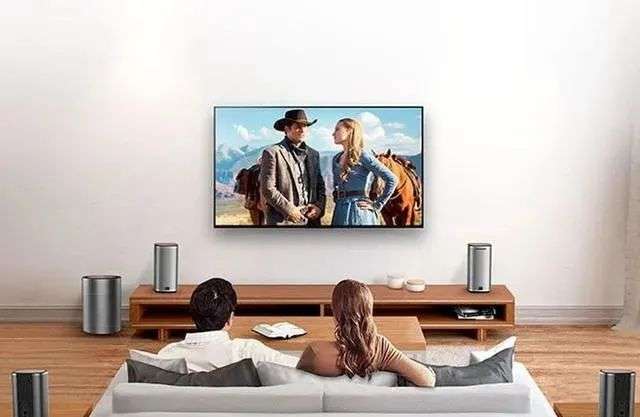
| HDMI 1.2a
HDMI 1.2a was released on December 14, 2005, fully specifying consumer electronic control (CEC) features, command sets, and CEC compliance testing; A minor version of HDMI 1.2 was launched in December of the same year, supporting all CEC (Consumer Electronic Control) functions, allowing compatible devices to be controlled with a single remote control when connected to HDMI. The latest generation of TVs, Blu-ray players and other devices can support Deep Color technology, so that the display can be more colorful.

| HDMI 1.3
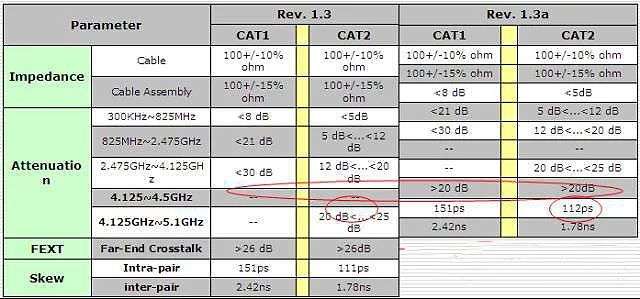
Bandwidth increased to 10.2 Gbps with support for Deep Color and HD audio streamingA major revision was launched in June 2006 to increase the bandwidth to 10.2 Gbps in one go, supporting 30-bit, 36-bit and 48-bit xvYCC, sRGB or YCbCr's Deep Color technology. In addition, it also supports Dolby TrueHD and DTS-HD MA high-definition audio streaming, which can be decoded by Blu-ray machines through HDMI streaming audio to supported amplifiers, and then HDMI1.3a, 1.3b, 1.3b1 and 1.3c are only minor changes, and the 3D boom brought by "Avatar" has lasted for several years, so many of the new features of HDMI are optimized for 3D.
| HDMI 1.4
HDMI 1.4 is the most popular version in the early years, launched in May 2009, and already supports 4K resolution, but only 4,096 × 2,160/24p or 3,840 × 2,160/24p/25p/30p. At the beginning of the 3D craze, HDMI 1.4 also supported 1080/24p, 720/50p/60p 3D images. In terms of audio, the ARC (Audio Return Channel) function has been added to the very useful, allowing TV audio to be transmitted back to the amplifier via HDMI and then output. It also adds 100Mbps network transmission to share Internet connections via HDMI, and supports 4K/30p, 3D and ARC.
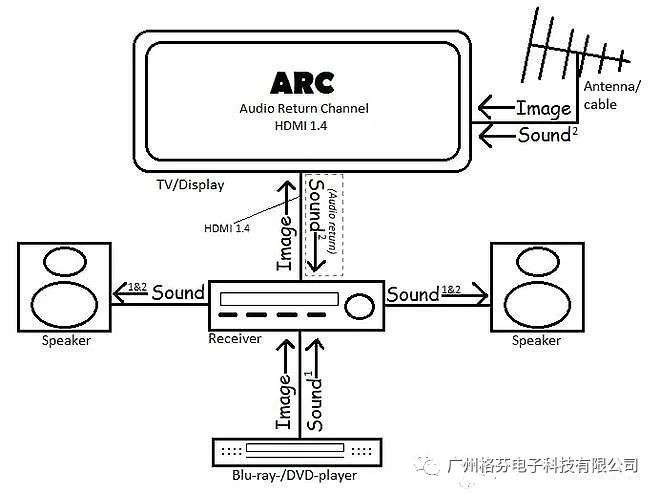
| HDMI 1.4a, 1.4b
The 3D craze brought about by "Avatar" has continued, so in March 2010 and October 2011 respectively, HDMI 1.4a and 1.4b were launched, mainly for 3D, such as adding two more 3D formats for broadcasting, supporting 1080/120p 3D images, etc.
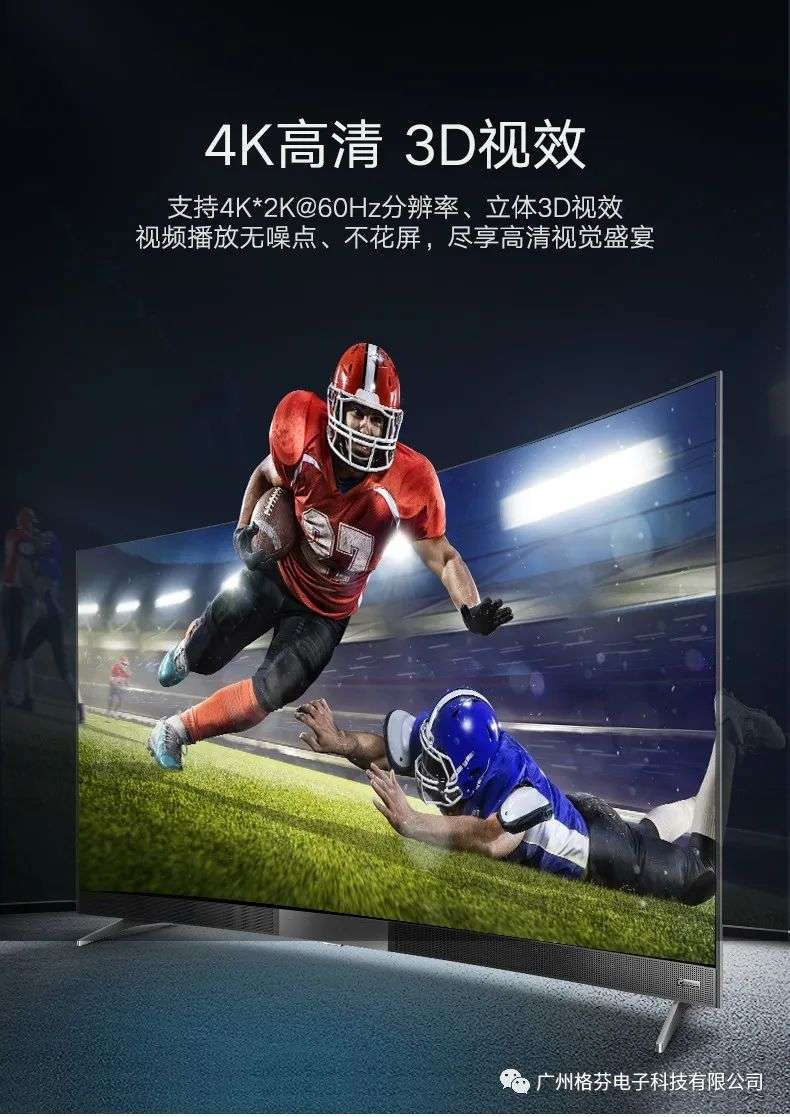
| HDMI 2.0
Starting from HDMI2.0, the video resolution supports 4K/60p, which is also the HDMI version that is more commonly used in many TVs, amplifiers and other equipment, and HDMI 2.0 launched in September 2013 is also known as "HDMI UHD", although HDMI 1.4 already supports 4K video, but only supports 30p lower specifications. HDMI 2.0 increases bandwidth from 10.2 Gbps to 18 Gbps, supports 4K/60p video, and is compatible with Rec. 2020 color depth. Nowadays, many devices, including TVs, amplifiers, Blu-ray machines, etc., use this HDMI version.
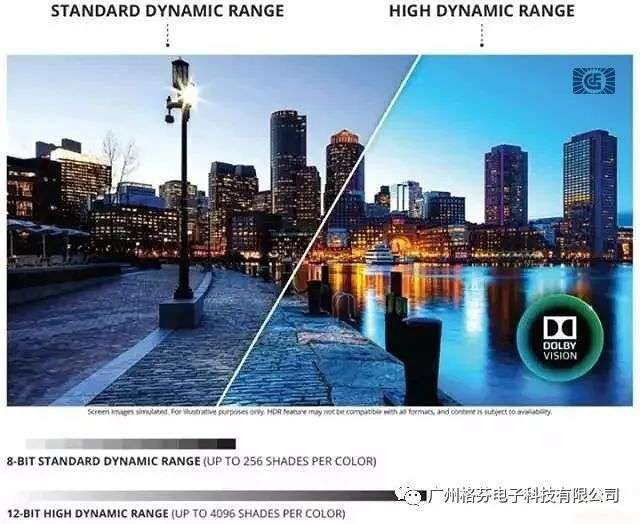
| HDMI 2.0a
Released in April 2015, HDMI 2.0 was a minor facelift with HDR support. Most of the new generation of HDR-capable TVs will adopt this version, and new amplifiers, UHD Blu-ray machines, etc., will also have HDMI 2.0a terminals. Later, HDMI 2.0b added Hybrid Log-Gamma, an HDR format for broadcasting, from the original HDR10 specification.
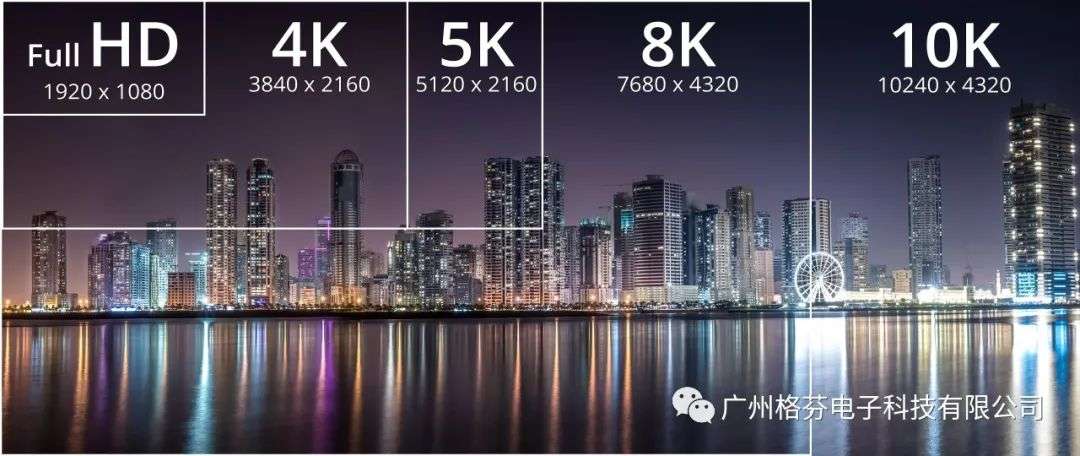
| HDMI 2.1
The latest HDMI 2.1 version released in January 2017, the biggest feature of HDMI 2.1 is that the transmission bandwidth has been greatly increased from 18Gbps to 48Gbps, and supports new technologies such as dynamic HDR, audio return channel (eARC), variable refresh rate (VRR), fast media switching (QMS), fast frame transfer (QFT), automatic low latency mode (ALLM), VESA DSC 1.2a and other new technologies. Supports up to 7,680 × 4,320/60Hz (8K/60p), or higher frame rates at 4K/120Hz. HDMI 2.1 will continue to support the original HDMI A, C and D plug designs. In addition, it supports the new Dynamic HDR technology, which can further improve the contrast and light level performance according to the light and dark distribution of each frame compared to the current "Static" HDR. In terms of audio, HDMI 2.1 supports the new eARC technology, which can transmit back object-based sound effects such as Dolby Atmos compared to the existing ARC (Audio Return Channel).
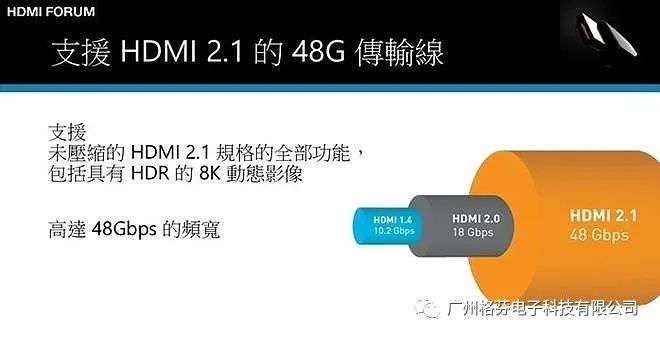
| HDMI 2.1a
In January 2022, the HDMI standard was updated again, and the version was upgraded from HDMI2.1 to HDMI 2.1a, the upgrade is only HDMI 2.1a to add SBTM function to enhance the HDR display effect, in fact, the main reason for the upgrade version is to define the name of HDMI 2.1, and the HDMI licensing organization has released two subdivision standards, namely: HDMI 2.1 TMDS - 18Gbps; HDMI 2.1 FRL - 48Gbps;
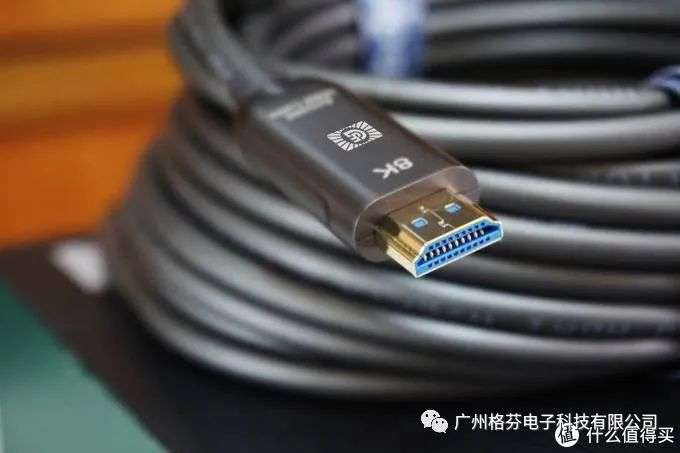
Comparison of parameters of HDMI versions
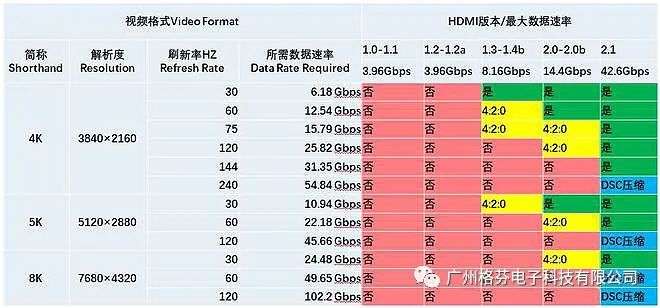
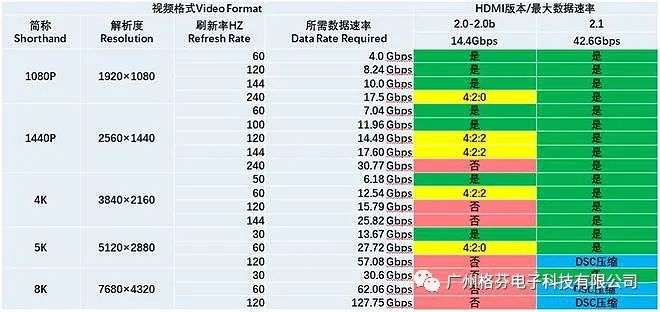
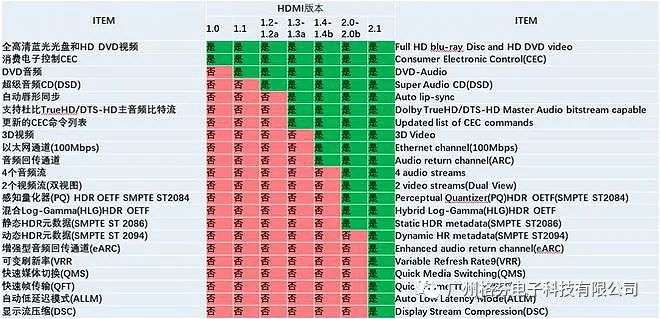
HDMI products in the impact of Type-C cables,The current market share has the risk of carving up,But due to the early HDMI leading position in the field of high-definition TV,As long as HDMI higher specifications are released,More highlights,Improve the technical requirements of the product,The future can continue to maintain a leading position,Due to the defects of the Type-C connector,The reliability of the interface is weak,TV,Display and audio and video part in the industry, It is difficult to have better performance, and the HDMI market has the opportunity to perform better with continuous version upgrades.
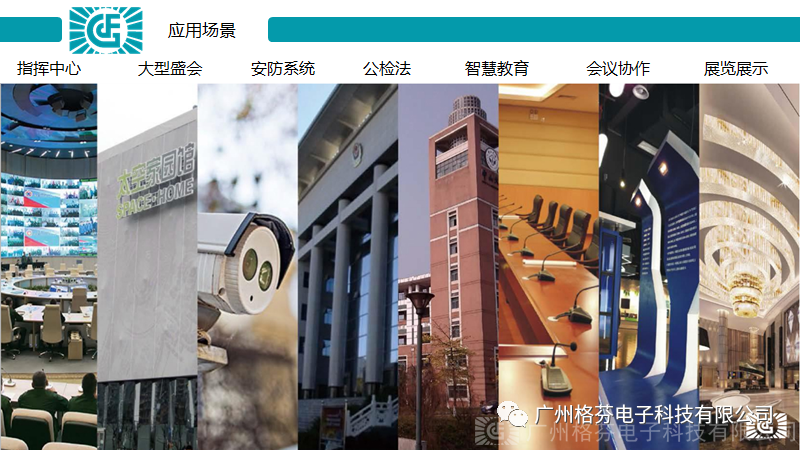

 :Building 3, Baizhong Creative Park, No. 240 Shilian Road, Panyu District, Guangzhou,Guangdong,China
:Building 3, Baizhong Creative Park, No. 240 Shilian Road, Panyu District, Guangzhou,Guangdong,China :+86 13928186280(Same WeChat/Whatsapp account)
:+86 13928186280(Same WeChat/Whatsapp account) :+86 20-34702140
:+86 20-34702140 